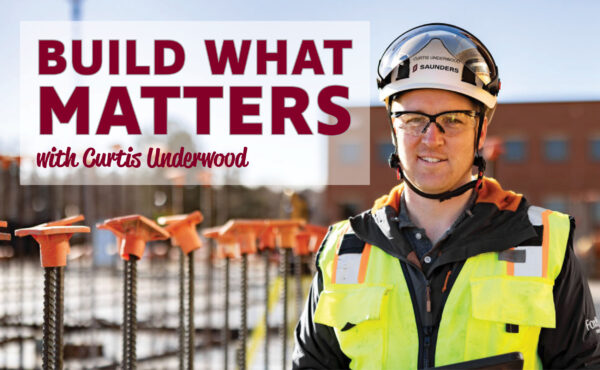Collaborating with educators, students and campus administrators to construct flexible, durable learning spaces.
Growing up in the Midwest, the son of two hardworking teachers who each dedicated over 30 years, I have a level of appreciation for educators of all levels. My parents’ commitment to their students did not go unnoticed, and the level of care and passion they provided was only enhanced by the buildings, learning spaces and resources they had access to.
Although I didn’t pursue a career in education like my parents, my passion for building and construction often presents opportunities to partner with local schools and universities to create flexible learning spaces. I’ve worked on several higher education projects building technical learning environments and athletic training spaces. There’s usually a needed balance between the flexibility and functionality of the space for the students and educators, and the durability, operations and future maintenance for the facilities staff.
Flexibility is important as technology, equipment and university partnerships fluctuate and advance. I’ve helped with organization and space planning to maximize unique spaces for current needs, while keeping them flexible as each program evolves. Technical learning programs like nursing, culinary arts, science and engineering, automotive and construction trades often have local partnerships that provide equipment and hands-on learning opportunities for students. At times, it is unpredictable what these partnerships will offer in the future. Flexibility for each program’s learning environment is key to making sure a variety of equipment can work in the space.
During the preconstruction phase, I’ve enjoyed collaborating with students and educators to get feedback on the design of their space. Technology like virtual reality and augmented reality allows us to create digital environments so they can see the designed areas before they’re built. From their unique perspectives, we can change wall outlets, ceiling heights, hallway widths, and customize finishes for better functionality for end users. This is also a unique opportunity for university donors to see the space and understand the impact their donations can have on the future of a building.
On the other hand, university project managers and facilities staff think more holistically about projects on campus, caring more about the project’s budget, future maintenance costs, and impact to the campus during construction. These projects have fixed budgets, usually from public funding sources that don’t present themselves often, and need to be carefully managed by the construction team. We often must incorporate building systems and materials so campus buildings can support operations for 50 to 100 years. As a construction partner, we guide the decision-making process, so the university is spending money where it matters most for their project.
Sustainability and decarbonization are also becoming necessary for higher education projects, as campuses across the nation put plans in place to reduce carbon emissions and implement green building systems. We not only help with creative ways to reduce operational carbon emissions once the project is complete, we go one step further and find creative ways to reduce our Scope 3 environmental impact throughout the construction process.
Higher education projects have been some of my favorite in my career. Collaborating with campus stakeholders throughout each project and delivering exceptional learning environments reassures me why I chose to study construction in school. I look forward to seeing the impact these completed projects have on the future of education.
Media Contact
Teena Bergstand
Vice President of Market Strategies and Communication
(303) 699-9000
m.inquiries@saundersinc.com
